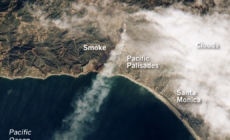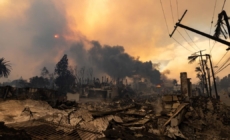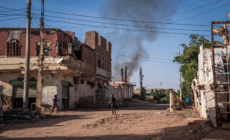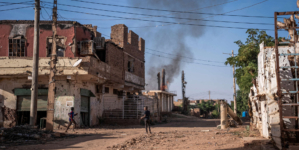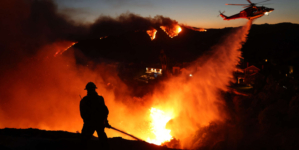-
These maps show Los Angeles’ Palisades Fire rapidly growing in first day - 22 mins ago
-
MLB Power Rankings: Top 10 Catchers - 24 mins ago
-
What happened to baby Gabriel? - 30 mins ago
-
Faults on power grid skyrocketed in hours before L.A. firestorm began - about 1 hour ago
-
Sudan Rebels at War with Army Hit Back at US over Genocide Claims - about 1 hour ago
-
Stafford-McVay, Allen-McDermott highlight Nick's HC-QB duo bracket | What's Wright? - about 1 hour ago
-
Serial killers in the driver’s seat - about 1 hour ago
-
The Bunny Museum, destroyed by Eaton fire, vows to return - 2 hours ago
-
Phillies Predicted To Pursue $54 Million Closer To Replace Carlos Estévez - 2 hours ago
-
Sixers rule rookie star Jared McCain out for season following knee surgery - 19 mins ago
Rare Rain in the Sahara Desert Causes Phenomenon
A highly unusual deluge has left vibrant blue lagoons amid the palm trees and sand dunes of the Sahara Desert, rejuvenating some of the most drought-stricken regions with water levels not seen for decades.
Southeastern Morocco, known for its extreme aridity, typically experiences little to no rainfall during the late summer months.
But the Moroccan government reported that two days of continuous rain in September exceeded the annual averages in several areas that receive less than 250 millimeters (10 inches) of precipitation each year.
AP
Tata, one of the hardest-hit areas, and Tagounite, a village around 280 miles south of Rabat, recorded more than 3.9 inches of rainfall within just 24 hours.
The stunning transformation brought striking visuals of water cascading through the Saharan sands, enhancing the landscape dotted with castles and desert flora.
In communities popular with tourists, 4×4 desert vehicles navigated through newly formed puddles, while residents marveled at the unprecedented spectacle.

AP
However, despite the benefits, the storms have also led to tragic consequences, with more than 20 fatalities reported in Morocco and Algeria.
The flooding has also damaged farmers’ harvests, prompting the government to allocate emergency relief funds, particularly in areas that are still recovering from last year’s devastating earthquake that killed at least 2,960 people.
Houssine Youabeb from Morocco’s General Directorate of Meteorology, said “It’s been 30 to 50 years since we’ve had this much rain in such a short span of time.”

AP
Meteorologists have attributed the phenomenon to an extratropical storm, which could significantly alter the region’s weather patterns in the coming months and years.
As the air retains more moisture, increased evaporation may draw additional storms, potentially changing the desert climate.
Before the recent rains, drought plagued Morocco for six consecutive years, leading farmers to abandon fields and prompting water rationing in cities and villages.
The rainfall is expected to replenish the vast groundwater aquifers that supply water to desert communities.

AP
Reservoirs in the region have reported record refilling rates throughout September, although it remains uncertain how much of an affect this rainfall will have on long-term drought conditions.
NASA satellites have captured images of water rushing into Lake Iriqui, a historic lake bed between Zagora and Tata that had remained dry for half a century.
The rainfall not only offers a glimpse of hope for a parched land, but also serves as a reminder of the delicate balance of nature in one of the world’s most extreme environments.
The article contains additional reporting from The Associated Press
Source link


